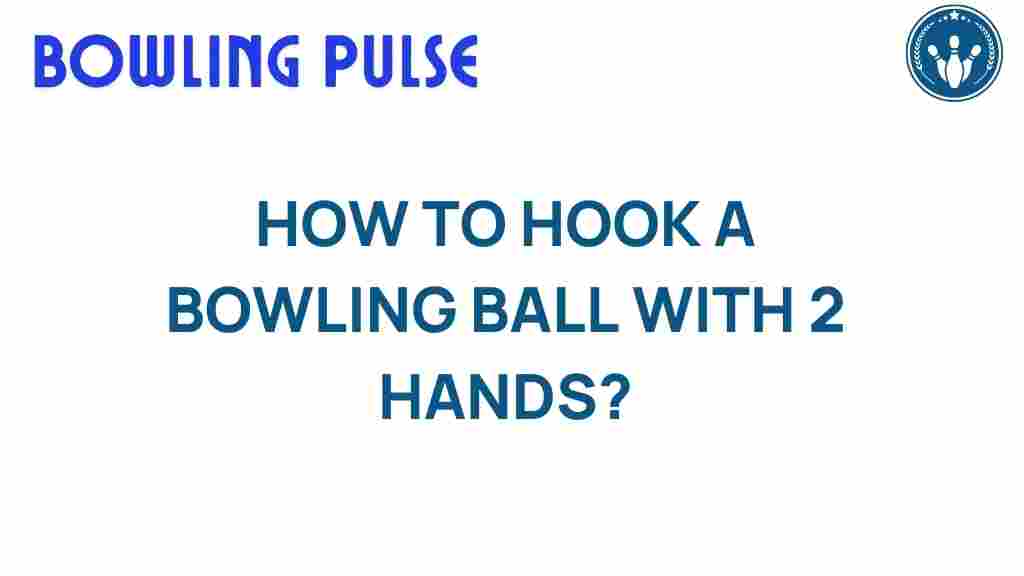Mastering the Art of Two-Handed Bowling
Bowling is a sport that blends skill, strategy, and a bit of flair, and one of the most exciting styles gaining popularity is two-handed bowling. This technique, favored by many modern bowlers, allows for greater control and the potential to create a powerful hook. In this comprehensive guide, we will explore various bowling techniques, particularly focusing on how to effectively hook the ball using two hands. Whether you are a beginner or looking to refine your skills, this article aims to provide invaluable bowling tips to enhance your game.
Understanding Two-Handed Bowling
Two-handed bowling involves using both hands to deliver the ball. This style has become increasingly popular due to its ability to generate significant revolutions, resulting in a strong hook. Here’s why you might consider adopting this style:
- Increased revs: Two-handed bowlers can create more revolutions on the ball, leading to a more pronounced hook.
- Better control: The use of both hands allows for improved stability during the delivery.
- Less stress on the arm: This technique can reduce the risk of injury by distributing force more evenly.
The Basics of Two-Handed Bowling
Before diving into the specifics of hook bowling, it’s essential to understand the fundamental components of the two-handed delivery. Here are the key elements:
- Bowling grip: The grip is crucial. Typically, the dominant hand (the one with which you throw) is placed under the ball, while the non-dominant hand supports the side.
- Stance: A proper stance sets the foundation. Stand with your feet shoulder-width apart, knees slightly bent, and the ball held close to your body.
- Approach: A smooth, controlled approach is vital. Focus on consistency in your steps, usually three to five, depending on your comfort.
Steps to Hook Bowling with Two Hands
Now that you understand the basics, let’s break down the process of executing a hook while maintaining a two-handed technique:
Step 1: The Grip
Your bowling grip is foundational to achieving a strong hook. Follow these instructions:
- Place your dominant hand under the ball, ensuring your fingers are spread comfortably.
- Your non-dominant hand should cradle the ball’s side, providing support without applying pressure.
- Keep your wrist firm yet relaxed to allow for flexibility during the release.
Step 2: The Stance
A proper stance is critical for balance and momentum. Here’s how to position yourself:
- Stand with your feet shoulder-width apart and knees slightly bent.
- Hold the ball at waist height, with your dominant hand underneath and your non-dominant hand on the side.
- Focus your eyes on your target, usually the arrows on the lane.
Step 3: The Approach
As you start your approach, remember these tips:
- Initiate with a smooth, controlled first step.
- Maintain a consistent rhythm throughout your approach.
- Use your non-dominant hand to guide the ball, keeping it close to your body.
Step 4: The Release
The release is where the magic happens. Here’s how to perform it effectively:
- As you reach the foul line, push the ball forward with your dominant hand while your non-dominant hand releases its hold.
- Rotate your thumb out of the ball first, followed by your fingers, ensuring to impart a strong upward motion to create the hook.
- Follow through with your arm, aiming to end high above your shoulder.
Step 5: Practice Your Timing
Timing is crucial in performance improvement. Work on synchronizing your steps with your ball release. Here are a few tips:
- Count your steps to maintain a consistent rhythm.
- Practice with a metronome or a slow song to develop your timing.
- Record yourself bowling to analyze your timing and adjust as necessary.
Troubleshooting Common Issues
Even with the best techniques, you may encounter challenges while mastering two-handed bowling. Here are some common issues and their solutions:
Inconsistent Hook
If your hook isn’t consistent:
- Check your grip; ensure you are applying the right amount of pressure with your fingers.
- Practice your release by focusing on the upward motion of your fingers as you let go of the ball.
- Keep your wrist firm yet flexible to allow for the necessary rotation.
Ball Going Straight
If the ball is not hooking at all:
- Review your grip and ensure your fingers are underneath the ball at the release.
- Focus on your follow-through; it should extend upwards to impart more revolutions.
- Adjust your starting position on the approach to create a better angle for the hook.
Struggling with Timing
If you find your timing off:
- Practice without the ball to focus on your footwork and rhythm.
- Use visual cues, such as arrows on the lane, to help maintain your focus and timing.
- Consider slowing down your approach to enhance control and timing.
Additional Bowling Tips for Beginners
As you embark on your journey in two-handed bowling, here are some additional bowling tips to consider:
- Practice regularly: Consistency is key in bowling. Aim for frequent practice sessions to hone your skills.
- Watch tutorials: Utilize online resources and videos to observe different bowling styles and techniques.
- Join a league: Engaging with a community can provide support and encouragement as you improve.
For more detailed guidance, consider checking out this helpful bowling tutorial.
Conclusion
Mastering the art of two-handed bowling is an exciting journey filled with opportunities for improvement and growth. By understanding the proper bowling techniques, focusing on your grip, stance, and release, and regularly practicing, you’ll be well on your way to becoming a proficient two-handed bowler. Remember to troubleshoot any issues you encounter, and don’t hesitate to seek out resources and communities that can support your learning. Whether you’re a beginner or an experienced bowler looking to refine your skills, the world of two-handed bowling offers a unique and rewarding experience. Happy bowling!
This article is in the category Techniques and created by BowlingPulse Team
